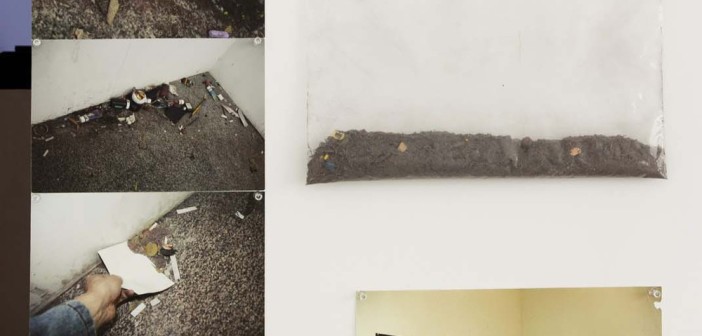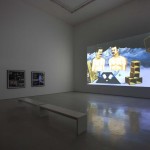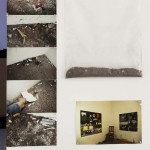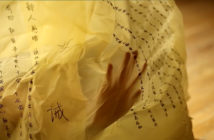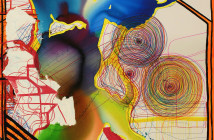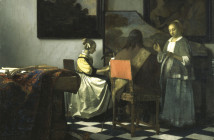I first saw Wang Haiyang’s animated videos last August at the opening of Future: Sub-Phenomenon at Beijing’s Central Academy of Fine Arts Museum. The monumental exhibition surveyed countless young Chinese artists, all of whom are addressing current social problems and trends that are affecting artistic discourse in China. Among the innumerable amount of works of art displayed, Wang Haiyang’s videos were some of the few to halt my hurried browsing.
Therefore, I was delighted when I stumbled across an exhibition of his work at White Space Gallery in Beijing’s most important art district, Caochangdi, during my most recent trip. His first solo exhibition at the gallery, titled The Metamorphosis, included two videos, Double Fikret and Freud, Fish and Butterfly.
These videos are animations of imaginative scenes being painted, erased, and repainted with pigment on the same sheets of sandpaper. A narrative is painted, then painted upon to transform it into a completely different scene. On the same piece of sandpaper, several scenes undergo the same process. Eventually, scenes connect to become a larger narrative.
Incredibly bizarre and Surrealist in nature, the animated scenes include a penis protruding out of one man’s armpit and penetrating another, the same man’s hair transforming into a flying black crow, and two men with shoes tied around their faces picking with their forks at an upside-down house on a plate.
The sheets of sandpaper on which the painting process occurred hung in the same room as the videos. I could never fully determine whether these canvases, which act like a blueprint of each video, were intended to be the final product of the animations or merely to show the process of how they were created. However, by displaying the videos, sandpaper sheets, and materials used together, I was allowed to completely explore the true meaning of the medium and experience Wang’s psychological and physical process of painting. The animations alone would have made a lasting impression on me; but being able to look at their blueprints and examine every scene and narrative truly heightened my understanding of the artist’s practice.
Wang Haiyang, whose previous exhibitions were comprised mostly of paintings, has moved beyond the boundaries of the medium and transformed it. His painted animations cause me to ponder what is truly representational of painting: the final results on a canvas, the process, or the fleeting thoughts and expressions of the painter’s mind?

